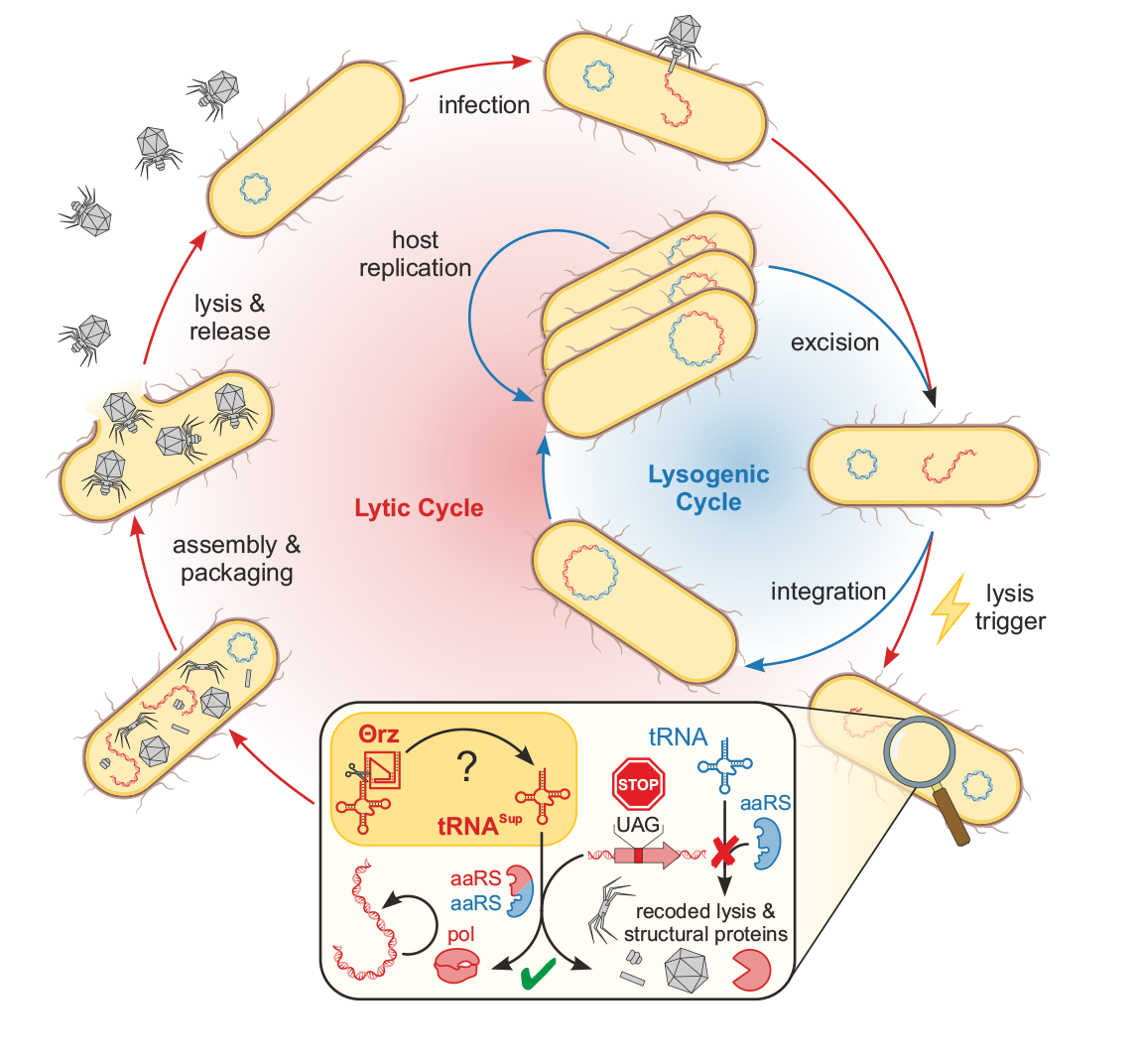Navigation auf uzh.ch
Navigation auf uzh.ch
Prof. Roland Sigel's research group at the Department of Chemistry at UZH has been studying ribonucleic acids, or RNA for short, for over 20 years. RNA codes the blueprint for the proteins of humans and animals. However, these building blocks can be interpreted differently, like two languages using the same letters. In the human intestine, viruses were recently discovered that are bilingual and use the switch between languages to trick their host (the bacterium). Thanks to the interdisciplinary collaboration with the research group of Prof. Christian von Mering from the Swiss Institute of Bioinformatics and the Institute of Molecular Biology at UZH, new insights have been gained into which RNA sequences could support bilingualism. These results provide an insight into the regulation of the intestinal flora and could therefore be important for the balance of the gut flora and gut health.
Viruses and bacteria in the gut
Billions of bacteria and bacteriophages live in the human gut. Bacteriophages are viruses that exclusively attack bacteria. The battle between bacteria and phages is older than mankind itself. The defense systems on both sides are correspondingly highly developed. One defense system of phages is "bilingualism". The virus penetrates the bacterium and adopts the bacterium's language. Later on, the viruses can change the genetic code, i.e. the "language", and thus destroy the bacterium. The two research groups have come one step closer to answering the question of how exactly the language change works.
RNA - information and function
Since the Covid pandemic at the latest, many people are probably familiar with RNA. The RNA vaccine developed against the coronavirus makes use of the properties of RNA as an information carrier. RNA is introduced into the body as a "blueprint", the cells use the RNA to produce the viral antigen, which in turn triggers the immune response in the body. However, not all RNAs are information carriers, only a small percentage encodes information, the vast majority of RNAs do not store any information. So the question is: what is this RNA used for? It is known that RNAs can fold into 3D structures and thus carry out chemical reactions. These structures are called ribozymes (ribonucleic acid enzymes). The research groups of Prof. Sigel and Prof. von Mering have now used a computer-assisted search in genetic databases to identify small ribozymes that are always localized next to transfer RNAs (tRNAs). If a certain type of tRNA is released, the bacteriophage can change language. "We were able to show that the ribozymes we identified can release tRNAs in the test tube and could therefore probably support the language change of bacteriophages in the bacteria," explains Kasimir Kienbeck, a doctoral student in Prof. Sigel's research group. "Interestingly, we find these ribozymes almost exclusively in bacteriophages that originate from the intestines of humans and mammals."
"Our results expand our knowledge of the biological functions of ribozymes. In addition, we were able to identify a previously unknown factor that could support the "language change" of bacteriophages in the human intestine," Kasimir Kienbeck and Lukas Malfertheiner summarize the research results.

Kienbeck, K., Malfertheiner, L., Zelger-Paulus, S. et al. Identification of HDV-like theta ribozymes involved in tRNA-based recoding of gut bacteriophages. Nat Commun 15, 1559 (2024).
https://doi.org/10.1038/s41467-024-45653-w